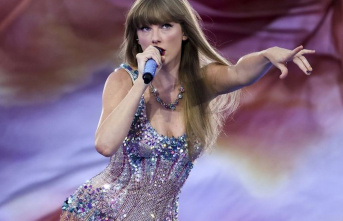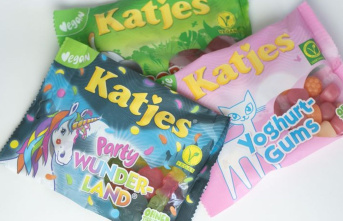You are one of the faces of television in Germany. They already existed when the screens between Flensburg and Garmisch-Partenkirchen were still flickering in black and white, and today they are part of the digital media world.
The Mainzelmännchen of ZDF celebrate their 60th birthday. In April 1963 they premiered with the broadcast of the first commercial on Second German Television. In Mainz, where ZDF is based, an exhibition dedicated to the anniversary is dedicated to the little creatures until June.
Since April 2, 1963 - one day after the start of the station - commercials on ZDF have been separated by short sequences with the six men. "Without advertising, there would be no Mainzelmännchen," emphasizes Hans-Joachim Strauch, Managing Director of ZDF advertising television.
Much has happened since the beginning in the year of the assassination of US President John F. Kennedy and the signing of the Elysée Treaty between Germany and France. Since the first commercial in color was broadcast on ZDF on August 25, 1967, Anton, Berti and Co. have also been in colour, and their appearance has been revised and modernized several times. The surroundings of the Mainzelmännchen also always adapted to the current zeitgeist - the old telephone, for example, became a smartphone, and the tube television became a tablet.
This is how the Mainzelmännchen came about
The little men were once created by the film architect and set designer Wolf Gerlach (1928-2012). In the 1960s he worked for the film production company NFP, founded by Franz Thies. Today, Thies' son Stefan is the managing director of the animation company that still produces the Mainzelmännchen. He says, "My father Franz and Wolf Gerlach, the creative creator, brought these characters to life."
"Mr. Gerlach was the only one who could draw, and he always made comics on the side," says Stefan Thies. When the company found out in 1962 that ZDF needed advertising separators, they developed designs for the station - one of which was the Mainzelmännchen drawn by Gerlach. "That's how Wolf Gerlach as a creative and my father as a businessman bagged it that the Mainzelmännchen ended up on ZDF," says Thies. "In this respect, it's also family history and a bit of lifeblood."
The decade-long presence of the gnome-like beings is also noticeable outside of television: in 2013, the city of Mainz awarded them the "Mainzelmännchen honorary status". Hardly anyone has shaped the media image of Mainz as lastingly as the Mainzelmännchen, said the former Mayor of Mainz, Michael Ebling (SPD). In November 2016, the first Mainzelmännchen traffic light went into operation in Mainz - others followed and so Det with the glasses now flashes red and green at several pedestrian crossings in the Rhineland-Palatinate state capital.
In 2018, an Astro-Mainzel - a special edition by Conni - will make it into space. The little figure accompanied the German astronaut Alexander Gerst to the International Space Station ISS, and the mouse and the elephant from ARD children's television were also there at the time.
Animation pictures drawn by hand
In the program itself, the Mainzelmännchen inserts, like commercials, became shorter and shorter, according to ZDF. If they were up to ten seconds long in the 1960s, today's stories usually last two to four seconds. According to Stefan Thies, however, there is a lot of work behind the short spots: Even today, the animated images are still drawn by hand - partly on paper, partly digitally on the tablet, explains Thies. Around 90 new spots are added every month.
According to Strauch from ZDF advertising television, the gnomes are very popular with viewers, as shown by reactions from the broadcaster's viewer service as well as e-mails and posts with positive feedback. Spots by the Mainzelmännchen were somewhat controversial during the Corona period, in which they campaigned for the wearing of protective masks and compliance with distance rules. At that time there was a lot of critical feedback from the lateral thinker scene, remembers Strauch.
Basically, in the world of the Mainzelmännchen, topics such as gender, religion, ethnicity, any form of impairment, cultural or social differences and sexual identity are deliberately not addressed, explains ZDF advertising television. The little characters' stories were for entertainment only. "Especially in difficult times, it's always a very nice change to just see something cheerful, something light, which is fun and in a good mood, even if it's only for a short time," says Stefan Thies.
Until June 9, the exhibition in Mainz provides insights into the world of little TV stars and offers hundreds of exhibits - from a carnival jacket with Mainzelmännchen motifs to a Mainzelmännchen suit and a tie with the characters. There will also be a special stamp with three motifs on the occasion of the 60th birthday. It will be available in post offices from August.











